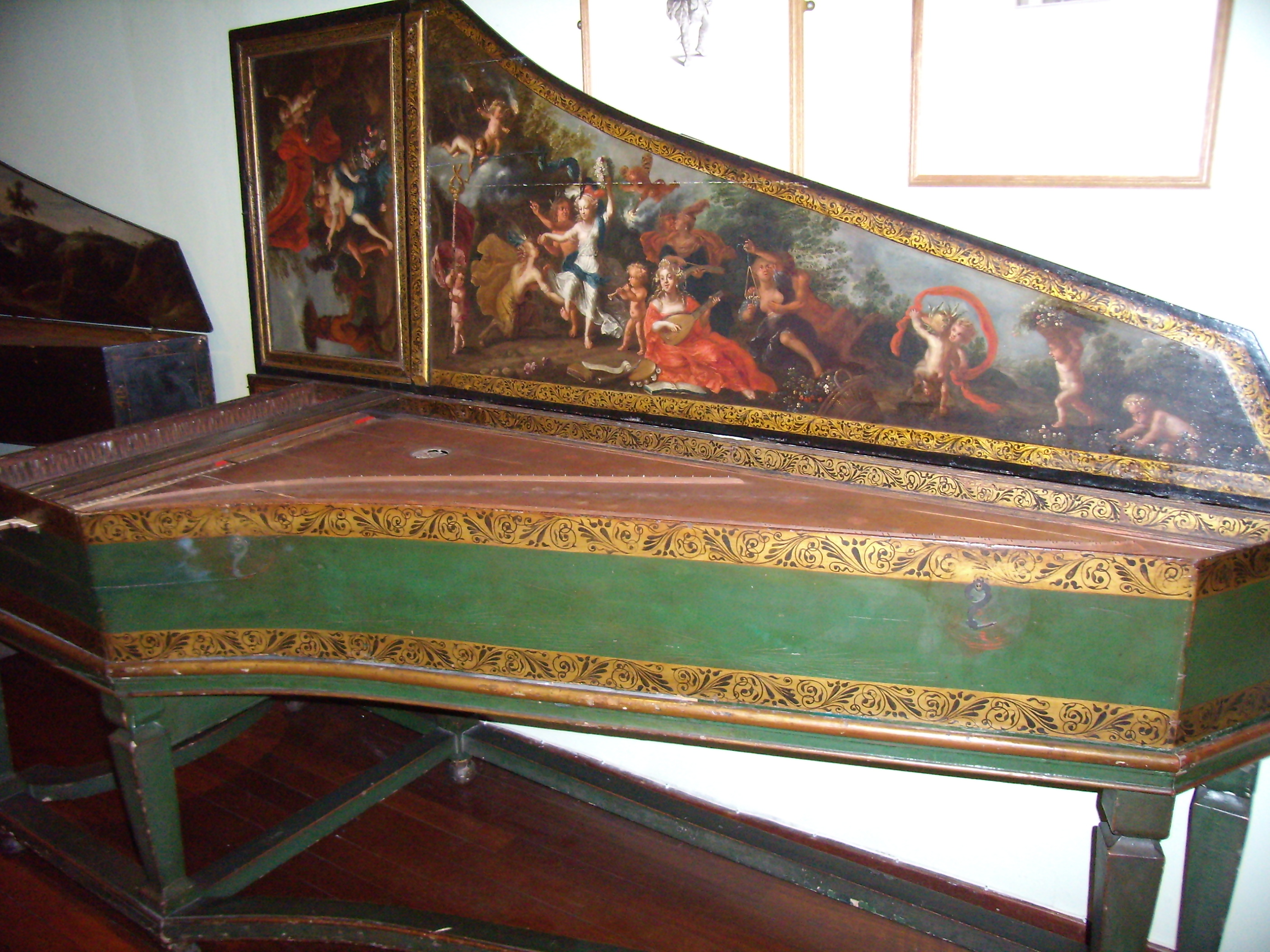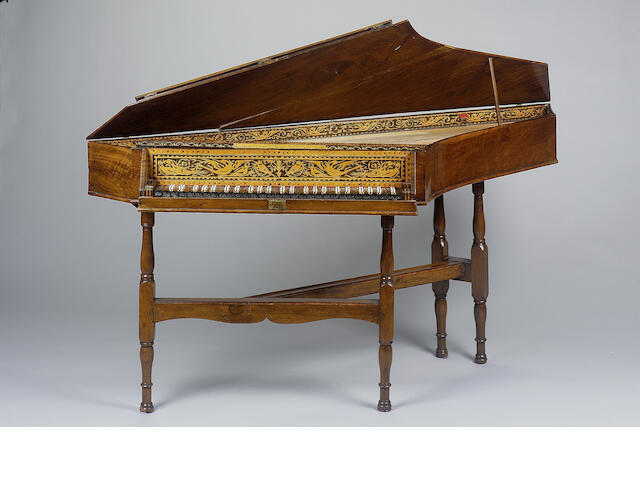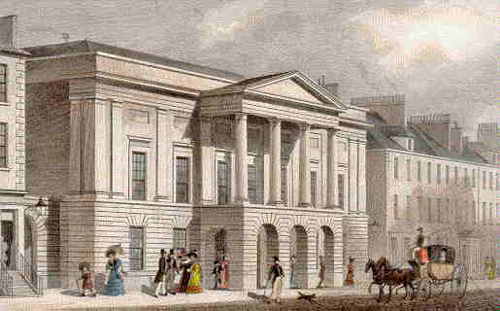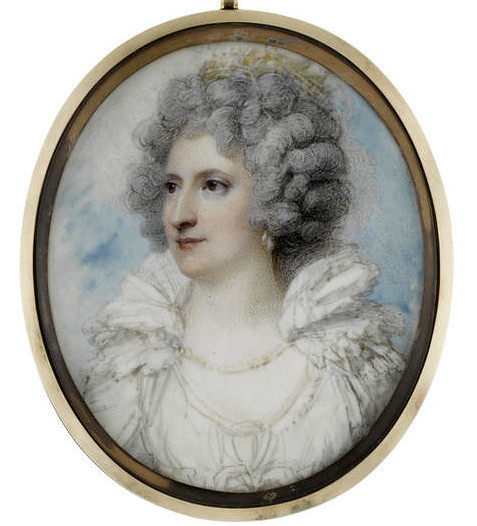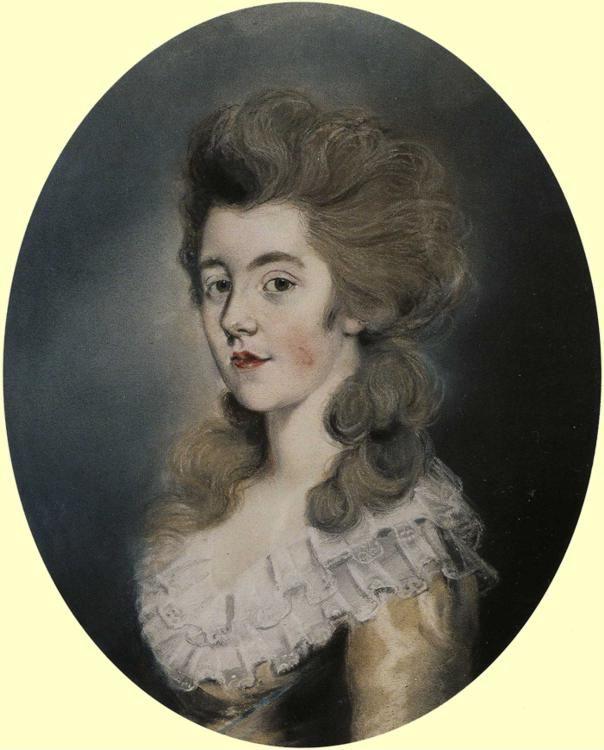
Thursday, December 19, 2013
Exhibition Review: High Spirits: The Comic Art of Thomas Rowlandson
I recently had the pleasure of seeing High Spirits: The Comic Art of Thomas Rowlandson now on display at the Queen's Gallery, Holyroodhouse which explores the satirical prints of one of our favourite satirists. My review can be seen as the BSECS Criticks' page here. There is also an accompanying catalogue (which is quite big) for those who will miss the exhibition. In short, the exhibition is packed with some of Rowlandson's most well-known prints as well as some rarer pieces. There is a section dedicated to the Westminster Election of 1784 so there are quite a few prints depicting the Duchess of Devonshire and they're all in pristine condition. So if you can make it to this exhibition, be it in Edinburgh or London, I would recommend it!
Wednesday, December 18, 2013
Spinets
Tis the season for Christmas music to be on ad nauseum. One song that I keep hearing recently is We Need a Little Christmas which contains a line about singing carols at the spinet. So in the spirit of the season let's look at the beauty that is this lesser-known musical instrument.
Spinets are the harpsichord's less popular sister...well in terms of notoriety at least. They sound just like a harpsichord but the difference lies in that, unlike their big sister, they only have one set of strings so are a little more simple (check out this video of my colleague playing a harpsichord if you're not quite sure what I mean). Spinets are also smaller and tend to be 'bentside,' meaning they are a bit triangular and fit conveniently against a wall. They are basically the basically the upright piano to the harpsichord's grand. Therefore, if you weren't raking in Mr Darcy's income, you may have still been able to afford a spinet so as your daughters could tick off 'music' on their accomplished young lady checklist. Despite being slightly more middle-class (if you will) spinet craftsmen still created some glorious pieces; so without further ado, let's fill our eyes with them.
Spinets are the harpsichord's less popular sister...well in terms of notoriety at least. They sound just like a harpsichord but the difference lies in that, unlike their big sister, they only have one set of strings so are a little more simple (check out this video of my colleague playing a harpsichord if you're not quite sure what I mean). Spinets are also smaller and tend to be 'bentside,' meaning they are a bit triangular and fit conveniently against a wall. They are basically the basically the upright piano to the harpsichord's grand. Therefore, if you weren't raking in Mr Darcy's income, you may have still been able to afford a spinet so as your daughters could tick off 'music' on their accomplished young lady checklist. Despite being slightly more middle-class (if you will) spinet craftsmen still created some glorious pieces; so without further ado, let's fill our eyes with them.
Friday, November 8, 2013
Bowie, Venetian Masquerades, and Designer Clothes
...What more could a girl want? Louis Vuitton have taken a brash marketing move in directly targeting ME for their new campaign.
Does anyone else relate to the protagonist in this? Don't we all do this when we visit historic sites?
Friday, October 11, 2013
Quotables
Wednesday, October 2, 2013
Forbidden feathers
On June 1, 1785 Eliza Sheridan wrote of a visit to the theatre where, as usual, eyes were mostly on those off the stage:
'The King, Queen, and the Three Princesses with two of the younger childred occupied two Boxes fronting the Orchestra. The Duchess of Devonshire and all the women of Fashion in a gallery near them...With regard to the company the Women appeared to disadvantage as being forbid Hats and Feathers they had almost uniformly put on the most disfiguring head-dress I ever saw — A Mob of a most immense size, simply illustrated with blue or yellow ribbons — this over friz'd Heads and sallow complexions had a very bad effect — a few with fair skins and clear brown hair bore the disguise tollerably.'
Tuesday, October 1, 2013
The City in the North's Assembly Rooms
When we think of assembly rooms, we often think of the famous tension-filled dancing scenes from Jane Austen's novels. However, these early 'function rooms' had been around in some form for some time. An example of this comes from the story of Edinburgh's Assembly Rooms which had their origins in the 17th century. The rooms still exist in their Georgian splendor today, but that's only after they had migrated from their original 17th century location. Before then, balls were held for charity and the matriarchs of Edinburgh organized them, raising funds for noble causes such as the Royal Infirmary.
By the latter-half of the 18th century Edinburgh had established itself as an Enlightenment city and there was a push for it to look as such to reflect its ulta modernity. The neoclassical suburb of New Town began its constructed in 1765, allowing well-to-do residents an opportunity to get out of the crowded medieval area of the city and establish themselves in new fashionable digs. This meant there was a new fashion-capital of the town, and an old assembly room would no longer appeal to the targeted clientele; a new, thoroughly modern assembly room must be erected.
Just as with the New Town's plans, a competition was held for the design of the new Assembly Rooms and it was won by John Henderson. The cost of construction was £6,300 and came from a public subscription. By 1787 the rooms were finished and could boast being the largest in the country, even surpassing Bath's famous pump room. Finally, Edinburgh residents felt as though they could rival the entertainments found in the south with the splendor of venues like the Assembly Rooms. This however, put a bit of pressure on Edinburgh society to maintain this distinction and in 1818 (arguably the height of assembly room entertainment) a grand portico was added because it was thought the building was lacking in splendor.

The Assembly Rooms, much like the rival Bath assembly rooms, still stand today. After undergoing a recent refurbishment they are now back to the glittering splendor that so impressed guests in 1787.
By the latter-half of the 18th century Edinburgh had established itself as an Enlightenment city and there was a push for it to look as such to reflect its ulta modernity. The neoclassical suburb of New Town began its constructed in 1765, allowing well-to-do residents an opportunity to get out of the crowded medieval area of the city and establish themselves in new fashionable digs. This meant there was a new fashion-capital of the town, and an old assembly room would no longer appeal to the targeted clientele; a new, thoroughly modern assembly room must be erected.
Just as with the New Town's plans, a competition was held for the design of the new Assembly Rooms and it was won by John Henderson. The cost of construction was £6,300 and came from a public subscription. By 1787 the rooms were finished and could boast being the largest in the country, even surpassing Bath's famous pump room. Finally, Edinburgh residents felt as though they could rival the entertainments found in the south with the splendor of venues like the Assembly Rooms. This however, put a bit of pressure on Edinburgh society to maintain this distinction and in 1818 (arguably the height of assembly room entertainment) a grand portico was added because it was thought the building was lacking in splendor.

The Assembly Rooms, much like the rival Bath assembly rooms, still stand today. After undergoing a recent refurbishment they are now back to the glittering splendor that so impressed guests in 1787.
Friday, August 23, 2013
Cereal and the French Revolution
These poor fops...not even the Scarlet Pimpernel can save them now!
Kind of a grim topic for breakfast cereal, no?
Kind of a grim topic for breakfast cereal, no?
Monday, August 5, 2013
Movie Review: A Royal Affair
It has been, what seems too long in my mind since I have had a movie to review. Thank goodness for the Danish film, A Royal Affair, which came out last year and even won an Oscar for best foreign film. It tells the story of that old tart, Queen Caroline Matilda (sister to King George III) and her (royal) affair with Dr Struensee. It had to be spicy and scandalous and good, right? Right? Sigh...I have to admit, I didn't quite care for it. Perhaps it was mostly because I felt I had seen it before?
The movie begins with young Caroline excited about the prospect of being Queen of Denmark. After riding in a beautiful carriage she meets the king in the woods of her new home country and the initial meeting between the couple is awkward, but Caroline tries to ignore it. When they arrive at the palace the king jumps out of the carriage to shower affection on his dog. Upon her arrival, Caroline is robbed of her precious books and told they have plenty, more suitable Danish books for her to read. Is it just me, or does this sound like a mash up of The Duchess and Marie Antoinette? There was even the same camera shot of a birds-eye view of the carriage going under and arch to enter what would be Caroline's new home.
Like Marie Anotinette and Georgiana, the enthusiastic young Caroline finds herself miserable in marriage, complete with problems in the bedroom, distance in the relationship, and as an added bonus, a mild bout of royal insanity. However when the dangerous Rousseau-reading Dr S enters the picture the king's schizophrenic episodes subside under his guidance and a strong friendship blooms between the two men. Soon the lonely queen also succumbs to the doctor's charms and the two use the king as a puppet to pass their enlightened improvements to the country. Obviously, this can't last.
Oh but it does! On and on and on, continues the dull tale. Now I love this century and its scandalous women but can't we find a different tale to tell? I was disappointed that Georgiana's affair is what her biopic chose to focus on when she has such and exciting and multifaceted life. A Royal Affair is an example of this same sad storyline being done to death in a short period of film-making. The interesting aspect, in my humble opinion, is the relationship between the doctor and his royal patient and how the king's mental instability was handled; or in reality, ignored as if it wasn't actually happening while Caroline's own brother was strapped into a straight jacket in England around the same time. The overbearing dowager queen too, such a forceful figure in the actual historical event is pushed to remain a shadowing figure waiting in the wings. I think fashion buffs will also be disappointed by the jumping anachronistic costumes and the absolute lack of hair powder on the women. But maybe Denmark was different (I don't think Denmark was different).
Overall the movie had some good qualities but this eighteenth-century biopic just wasn't going to do it for me! Time for something new, original, and of course, fabulous.
 |
| Wait, haven't we seen gossiping at court dinner tables in the beginning of a film before? |
The movie begins with young Caroline excited about the prospect of being Queen of Denmark. After riding in a beautiful carriage she meets the king in the woods of her new home country and the initial meeting between the couple is awkward, but Caroline tries to ignore it. When they arrive at the palace the king jumps out of the carriage to shower affection on his dog. Upon her arrival, Caroline is robbed of her precious books and told they have plenty, more suitable Danish books for her to read. Is it just me, or does this sound like a mash up of The Duchess and Marie Antoinette? There was even the same camera shot of a birds-eye view of the carriage going under and arch to enter what would be Caroline's new home.
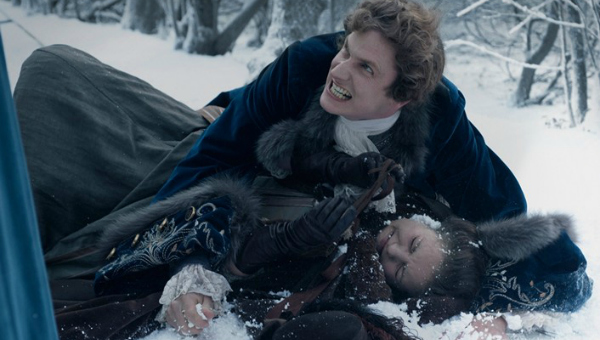 |
| Oh Christian, you so crazy |
Like Marie Anotinette and Georgiana, the enthusiastic young Caroline finds herself miserable in marriage, complete with problems in the bedroom, distance in the relationship, and as an added bonus, a mild bout of royal insanity. However when the dangerous Rousseau-reading Dr S enters the picture the king's schizophrenic episodes subside under his guidance and a strong friendship blooms between the two men. Soon the lonely queen also succumbs to the doctor's charms and the two use the king as a puppet to pass their enlightened improvements to the country. Obviously, this can't last.
 |
| Bath time is when queens get to delve into self-reflection |
 |
| One big happy, menage a trois |
Overall the movie had some good qualities but this eighteenth-century biopic just wasn't going to do it for me! Time for something new, original, and of course, fabulous.
Tuesday, July 2, 2013
Charlie Billingham
Another contemporary artist who has come to my attention lately is Charlie Billingham whose paintings are just plain glorious. Billingham appropriates British satirical prints from our favourite century into his paintings. Cropping the famous prints, sometimes stretching them, and using bright, exciting colours and loose lines, Billingham takes out the old social and political message (and context all together), adding mystery to these images which, if you've never seen them, could be quite indecipherable to begin with. Let's take a look.
Billingham has recently had shows at Saatchi Gallery, and I am sure there will be more to come so keep your eyes peeled!
Billingham has recently had shows at Saatchi Gallery, and I am sure there will be more to come so keep your eyes peeled!
Sunday, June 23, 2013
Another Eighteenth-Century Car Commercial
Lauren posted this commercial on Pinterest and I had to share it. If we are to believe this commercial, nothing gets a colonial gals' blood flowin' like an Italian "invasion." It still can't beat the Dodge commercials but I love seeing our favourite era on tv...even if they are a bit ridiculous ridiculous.
Sunday, June 9, 2013
Art Fund Visit: Mellerstain House
This past weekend was beautiful in Scotland which meant everyone had to take advantage of the sun and go outside. I ventured to one of the lesser-known stately homes in Britain, Mellerstain, which despite not having the fame of a house like Chatsworth or Goodwood, is absolutely gorgeous and well-worth a visit.
This was the first time I got to put my Art Pass to use which I must gush about because it is such a glorious thing for artsy-fartsy types, history nuts, and everyone in between. It is put out by the Art Fund, a charity that helps UK museums acquire works of art to add to their collection. When you get an Art Fund card, you're not only helping a good cause but you are getting into a lot of museum exhibitions and stately homes for free or discounted rates. So for those connoisseurs of art and history living in the UK, this card saves you a good amount of money and its accompanying guidebook is great for keeping you in-the-know of places and events that you can pop in with the Art Pass - next on my list is an eighteenth-century brewery, I'll keep you updated!
So through the Art pass guide, I was alerted to Mellerstain, which I was unfamiliar with and decided to check out because of its portrait collection and Robert Adam interiors. Mellerstain is the seat of the Earls of Haddington, and as you walk thought the gorgeous rooms you'll see photographs of the children of the current earl as well as the magazines the family has been reading (I love when you can tell that people still live in these homes). Almost every room had breathtaking Adam interiors in the neoclassical style and the family portraits by the likes of Allan Ramsay and Thomas Gainsborough are on view. The top story displays the family's personal items such as Adam's designs for the house, fans, clothing, toys, and letters from the 18-19th centuries. One of the best bits of my visit was that all the Mellerstain employees were so incredibly nice and informative; you could tell they loved working in this beautiful house.
But I'll let the pictures speak for me:
 |
| The library |
| Drawing Room ceiling |
| One of the first bathrooms |
| Original clothing on display |
| Back of the house and gardens |
 |
| The Music Room |
Georgian Pleasures Conference, Bath
For anyone whose pocket book has some clear dates free from 12-13 of September, I must encourage you to make way to Bath at all costs. Why you ask (although, do we ever need an excuse to venture to Bath?), well the Georgian Pleasures Conference will be held on those days and it sounds like it isn't your run-of-the-mill conference. I'll give you three good reasons why it's not to missed.
Firstly, this conference is interdisciplinary- not just academically, but in terms of it hosting speakers from all walks of life such as dancers and reenactors. Secondly, it's called 'Georgian Pleasures' which means it's a celebration of all the scandalous bits of the eighteenth century that we love, such as Mary Toft, prossies, and pleasure gardens. Finally, the conference ends with a big party- Georgian style. The Holburne Museum gardens will transform into an eighteenth-century pleasure garden so bring your best mantua, no really bring it, costumes are welcome! If you can't make it to the conference, do make a fashionably late appearance at the soiree. I hope to see you all there!
For more information check out the conference website.
Firstly, this conference is interdisciplinary- not just academically, but in terms of it hosting speakers from all walks of life such as dancers and reenactors. Secondly, it's called 'Georgian Pleasures' which means it's a celebration of all the scandalous bits of the eighteenth century that we love, such as Mary Toft, prossies, and pleasure gardens. Finally, the conference ends with a big party- Georgian style. The Holburne Museum gardens will transform into an eighteenth-century pleasure garden so bring your best mantua, no really bring it, costumes are welcome! If you can't make it to the conference, do make a fashionably late appearance at the soiree. I hope to see you all there!
For more information check out the conference website.
Thursday, May 9, 2013
Winner of How to Create the Perfect Wife
Congratulations......
You won a copy of Wendy Moore's How to Create the Perfect Wife. You know the deal, send me an email (GeorgianaGossip@gmail.com) with your address!
Thank you to everyone who entered the giveaway and do check out How to Create the Perfect Wife which is available in the US and UK.
You won a copy of Wendy Moore's How to Create the Perfect Wife. You know the deal, send me an email (GeorgianaGossip@gmail.com) with your address!
Thank you to everyone who entered the giveaway and do check out How to Create the Perfect Wife which is available in the US and UK.
Monday, April 29, 2013
Book Givaway: How to Create the Perfect Wife
I hope you are feeling lucky because it is time for a long-awaited book giveaway, and what a fabulous giveaway it is!
Wendy Moore, author of The Knife Man, and one of my personal recommended reads, Wedlock, the biography of Mary Eleanor Bowes has just finished her newest book, How to Create the Perfect Wife:
Anyone who would like a chance to win a hardcover copy of How to Create the Perfect Wife only needs to leave a comment on this post by May 8. Winners shall be announced the following day. Good luck!
The Small(ish) Print:
This giveaway is open to those with mailing addresses in North America and Europe. The winner will be drawn at random and is responsible for emailing me back within the week with their mailing address so don't forget to check back!
Wendy Moore, author of The Knife Man, and one of my personal recommended reads, Wedlock, the biography of Mary Eleanor Bowes has just finished her newest book, How to Create the Perfect Wife:
This is the story of how Thomas Day, a young man of means, decided he could never marry a woman with brains, spirit or fortune. Instead, he adopted two orphan girls from a Foundling Hospital, and set about educating them to become the meek, docile women he considered marriage material.That Thomas Day sounds like a real catch, doesn't he?
Unsurprisingly, Day's marriage plans did not run smoothly. Having returned one orphan early on, his girl of choice, Sabrina Sidney, would also fall foul of the experiment. From then on, she led a difficult life, inhabiting a curious half-world - an ex-orphan, and not quite a ward; a governess, and not quite a fiancée. But Sabrina also ended up figuring in the life of scientists and luminaries as disparate as Erasmus Darwin and Joseph Priestley, as well as that pioneering generation of women writers who included Fanny Burney, Maria Edgeworth and Anna Seward.
In HOW TO CREATE THE PERFECT WIFE, Wendy has found a story that echoes her concerns about women's historic powerlessness, and captures a moment when ideas of human development and childraising underwent radical change.
Anyone who would like a chance to win a hardcover copy of How to Create the Perfect Wife only needs to leave a comment on this post by May 8. Winners shall be announced the following day. Good luck!
The Small(ish) Print:
This giveaway is open to those with mailing addresses in North America and Europe. The winner will be drawn at random and is responsible for emailing me back within the week with their mailing address so don't forget to check back!
Sunday, March 24, 2013
Lady Hamilton's Attitudes
During the height of Emma Hamilton's celebrity, English visitors touring Italy would make sure to stop at the Hamilton homestead to check out her 'attitudes.' Emma would pose in the classical positions (or attitudes) found on Greek vases, much to the delight of all who saw. These were witnessed and drawn by many great artists of the time. One particularly enterprising artist, Fredrich Rehberg, drew Emma's attitudes and made them into a collection of prints so that the poor souls who couldn't afford to see this tourist draw could relive it every day in book form. Rehberg called this book, Drawings faithfully copied from nature at Naples : and with permission
dedicated to the Right Honourable Sir William Hamilton, His Britannic
Majesty’s Envoy Extraordinary and Plenipotentiary at the court of Naples
/ by his most humble servant Frederick Rehberg, historical painter in
His Prussian Majesty’s service at Rome. What a mouthful.
However, poor Emma, like many celebrities today, struggled with weight issues (among other things). Unlike celebrities today, there was no strict workout regime for Emma to undergo to maintain her slim figure. Emma grew bigger, but that didn't stop her from receiving visitors and displaying her attitudes. It wasn't long before this caught the eye of satirical artists back in London. In 1807 a new version of the book came out under the title, A new edition considerably enlarged, of Attitudes faithfully copied from nature : and humbly dedicated to all admirers of the grand and sublime. Although a characterization, the satirical artist's (probably Gillray) prints were fairly accurate: Emma was obese by 1807 due to years of food and alcohol abuse. But with that said, I must say that I much prefer the satirical version of Emma's attitudes!
However, poor Emma, like many celebrities today, struggled with weight issues (among other things). Unlike celebrities today, there was no strict workout regime for Emma to undergo to maintain her slim figure. Emma grew bigger, but that didn't stop her from receiving visitors and displaying her attitudes. It wasn't long before this caught the eye of satirical artists back in London. In 1807 a new version of the book came out under the title, A new edition considerably enlarged, of Attitudes faithfully copied from nature : and humbly dedicated to all admirers of the grand and sublime. Although a characterization, the satirical artist's (probably Gillray) prints were fairly accurate: Emma was obese by 1807 due to years of food and alcohol abuse. But with that said, I must say that I much prefer the satirical version of Emma's attitudes!
Wednesday, March 13, 2013
The New Phaeton
As women's hair grew bigger and bigger in the the 1770s, many satires honed in on the comedy of these women actually getting to their fashionable events that required such sartorial extravagance. The New Fashioned Phaeton (1776) was one print which had a suggestion for how society could accommodate such fabulosity.
Tuesday, February 19, 2013
On the Duchess of Gordon
'She looks as fierce as a dragon and contents herself with spending her breath upon politics, and ringing a daily peal in the ears of her poor husband, with whom, Lord William says, she squabbles more than ever.'-Lady Louisa Stuart
Sunday, February 17, 2013
A Walk in the Park Reveals a Startling Revelation
A walk in the pleasure gardens was a perfect opportunity for celebrity-spotting in eighteenth-century London. Fanny Burney wrote in April 1776 to a friend to tell of one particularly interesting glimpse of celebrity: none other than the Duchess of Devonshire. However, her account of the young debutant may come as quite a surprise...although if we think of all the paparazzi photos of celebrities returning from a night out or ungracefully exiting a car perhaps Fanny's account isn't so difficult to believe:
Mr. Burney, Hetty and I took a walk in the Park on Sunday morning, where, among others, we saw the young and handsome Duchess of Devonshire, walking in such an undressed and slaternly manner as in former times Mrs. Rishton might have done in Chesington Garden. Two of her curls came quite unpinned, and fell lank on one of her shoulders; one shoe was down at heel, the trimming of her jacket and coat was in some places unsown; her cap was awry; and her cloak, which was rusty and powdered, was flung half on and half off. Had she not had a servant in a superb livery behind her, she would certainly have been affronted. Every creature turned back to stare at her. Indeed I think her very handsome, and she has a look of innocence and artlessness that made me quite sorry she should be so foolishly negligent of her person. She had hold of the Duke's arm, who is the very reverse of herself, for he is ugly, tidy, and grave.
Omai, who was in the Park, called here this morning, and says that he went to her Grace, and asked her why she let her hair go in that manner! Ha, ha, ha ! Don't you laugh at her having a lesson of attention from an Otaheitan?
Thursday, January 24, 2013
Lady Hester Stanhope on...Political Hostesses' Hospitality
Lady Hester Stanhope was not a woman to hold her tongue, which was only more apparent when her doctor (and close friend) released her memoirs in 1845 - which was more like his memoirs of her. In it, William Pitt's niece remembered the various environments created by the great political hostesses of the time:
"'I
remember too what a heavy, dull business the Duchess of R[utland]'s parties were - the
rooms so stuffed with people that one could not move, and all so heavy - a deal
of high breeding and bon ton; but there
was, somehow nothing to enliven you. Now
and then some incident would turn up to break the spell.
Now,
at the Duchess of Gordon's there were people of the same fashion, and the crowd
was just as great; but then she was so lovely, and everybody was animated, and
seemed to know so well what they were about - quite another thing.
As for
the Duchess of D[evonshire]'s, there they were - all that set - all yawning, and wanting
the evening to be spent, that they might be getting to the business they were
after.'
It may be
mentioned that Lady Hester was always very
severe on the Duchess of D. and her friends, whenever her name or theirs
was mentioned."'
Friday, January 18, 2013
Country Homes: Nocton Hall
Location: Lincolnshire
Famous Inhabitants: Albinia Hobart, Countess of Buckinghamshire
Website: http://www.imagesofengland.org.uk/Details/Default.aspx?id=192338
It difficult to believe that a house with such history is listed as endangered. After countless fires and subsequent vandalism Nocton Hall is now a shell of a once-elegant country home. Not only did Nocton house the Tory hostess, Albinia Hobart's, lavish parties and private theatricals but also was transformed into a hospital for recovering soldiers in both WWI (for American soldiers) and WWII (for the RAF).
Subscribe to:
Posts (Atom)


